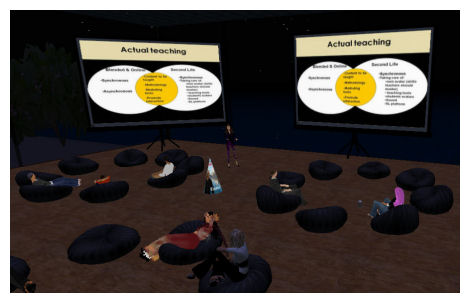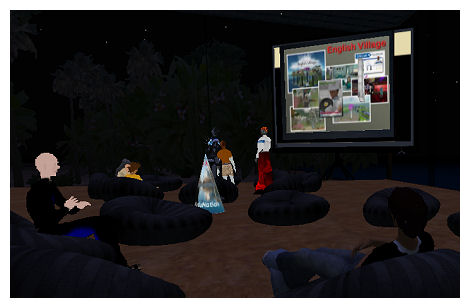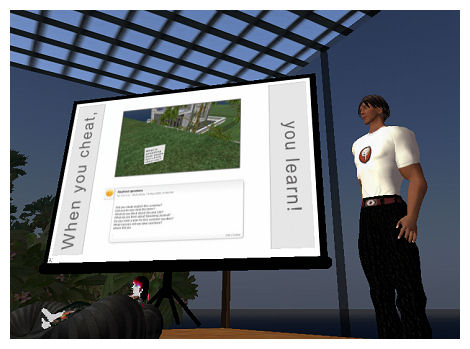JACET Summer Seminar
Kusatsu, Japan
18-20 August, 2015
I was privileged to be invited as a keynote speaker to the 42nd JACET Summer Seminar, held in the resort town of Kusatsu, some 200km north of Tokyo. It was great to be part of such a longstanding tradition of annual conferences, with this year’s seminar focused on Mobile learning in and out of the classroom: Balancing blended language learner training.
In my opening keynote on the first day, Framing mobility: What does mobile language learning look like?, I spoke about the importance of learning design and outlined the different designs seen in mobile learning projects, as well as the agendas that underpin those projects, before concluding with three brief case studies. Throughout the presentation, I stressed the importance of taking into account the context and balancing up the affordability and affordances of the available technology, before moving onto the learning design itself.
In my presentations on the second and third days, I looked at Future mobile learning from the point of view of technological developments and trends, and from the point of view of educational trends. I suggested that the future of learning will take shape at the point where today’s and tomorrow’s technological trends intersect with contemporary and emerging educational trends.
In his presentation, Mobile language learning: Examining the Japanese learner, Glenn Stockwell outlined the nature of technological affordances. Using technology, he suggested, must involve these steps:
- Deciding what tools to use or not use (which needs a focus on technology)
- Understanding why these tools should be used (which needs a theory of learning)
- Deciding on how to use these tools in/out of the classroom (which needs practice)
- Examining the relationship between these elements (which needs research and evaluation)
He stressed the importance of taking into account the context when implementing new technologies, including:
- Individual factors
- Institutional factors
- Societal factors
With mobile learning, it is important to consider physical issues (screen size, input methods, storage capacity, processor speed, battery life, and compatibility), pedagogical issues (taking advantage of the affordances of mobile technologies, such as mobility, interactivity, portable reference tools, and push and pull mechanisms; and training in using mobile devices for learning purposes) and psycho-sociological issues (computers as business tools, or mobile phones as personal tools). He outlined the kinds of learner training that are necessary: technical, strategic and pedagogical training (with the last of these focusing on why students should use mobile technologies to support their learning).
He suggested that mobile learning should be about making learning a life experience: activities should take advantage of the affordances of the technologies, and capitalise upon the ubiquitous nature of technologies and their potential interactivity. He concluded that teachers have an essential role to play in helping students understand how to learn most effectively with their mobile tools.
In his presentation, Flipped and active EFL learning in Japan integrating advanced technologies: From automatic voice recognition to mobile learning, Hiroyuki Obari suggested that nowadays teachers must act as facilitators, curators and mentors. In flipped classrooms, he went on to say, learning is more active and learners are more autonomous; there is no longer a teacher monopoly and students have greater control. He indicated that in order to develop students’ 21st century skills, teachers should invite them to work creatively with a selection of the Top 100 Tools for Learning. He showed a number of videos of his students making digital multimedia presentations to groups of peers. He reported on a research study in which he found that adopting a flipped approach where students watch lectures and prepare presentations outside class, and interact with peers in class, has led to improvement of students’ TOEIC scores.
In their presentation, Trends in the use of digital technology for assessment in language learning, Keiko Sakui and Neil Cowie spoke of the challenges of assessing web 2.0 projects. They suggested that rubrics might offer a solution. Based on the work of Stevens and Levi, they indicated that rubrics typically have 4 elements: a task description, a scale, dimensions to assess, and descriptions of the dimensions on the scale. Such rubrics can be used to set up project objectives, as well as to grade and give clear feedback on student work. They can help with difficult-to-measure features like participation, collaboration, collective tasks, digital literacies, and academic integrity. Thus, there seems to be a good fit between rubrics and web 2.0 projects. Some principles that could feed into rubrics include Bloom’s Taxonomy, and the CEFR and IB. The presenters are currently engaging in an action research cycle involving collaborative development of rubrics by teachers and students.
In his presentation, Blending mobile device-mediated collaborative tasks for oral production with traditional coursework, Hywel Evans discussed the value of highly structured mobile collaborative speaking tasks to get English learners talking in the Japanese classroom context. Mobile devices are used to distribute information (set up on the WordPress platform) to students who work in pairs on tasks of the spot-the-difference variety, which can be used to elicit any kind of spoken language desired. The mobile devices automatically assess students’ efforts, and award them points, so the teacher is free to circulate, monitor, and offer feedback.
In his presentation, Implementing a mobile-based extensive reading component: A report on student engagement and perceptions, Brett Milliner discussed the Xreading online system of graded readers, whose readers can be accessed on any device at any time. The system generates analytics on student reading, including book levels, number of words read, reading speed, and length of time to read a book, which allows the teacher to intervene to support students. Students can also see their own analytics data, helping them to reflect more critically on their reading progress.
In his presentation, Student perceptions of smartphone use for learning, Jeremiah Hall outlined research indicating the disadvantages of student multitasking as well as of secondary multitasking (that is, students being distracted by other students’ multitasking). When surveying his own students, he found that most liked being able to use a smartphone in class, with most disagreeing that other students using smartphones distracted them. It is important to educate students about the potential for distraction, and to indicate the reasons for classroom policies around smartphone use.
In their presentation, Gonta de Tango – An experimental system development for enhancing learners’ vocabulary through extensive reading, Yoshiko Matsubayashi and Akemi Kawamura described a software programme which allows students to highlight unknown words while reading a story and add them to their personal vocabulary list. In this way, they can read without worrying about unknown vocabulary. One plan is to have students select or draw illustrations to depict settings in the story at the end of each chapter.
All in all, this conference brought together a range of global and local perspectives on mobile learning, with many valuable presentations and discussions on how international trends are intersecting with Japanese trends.





